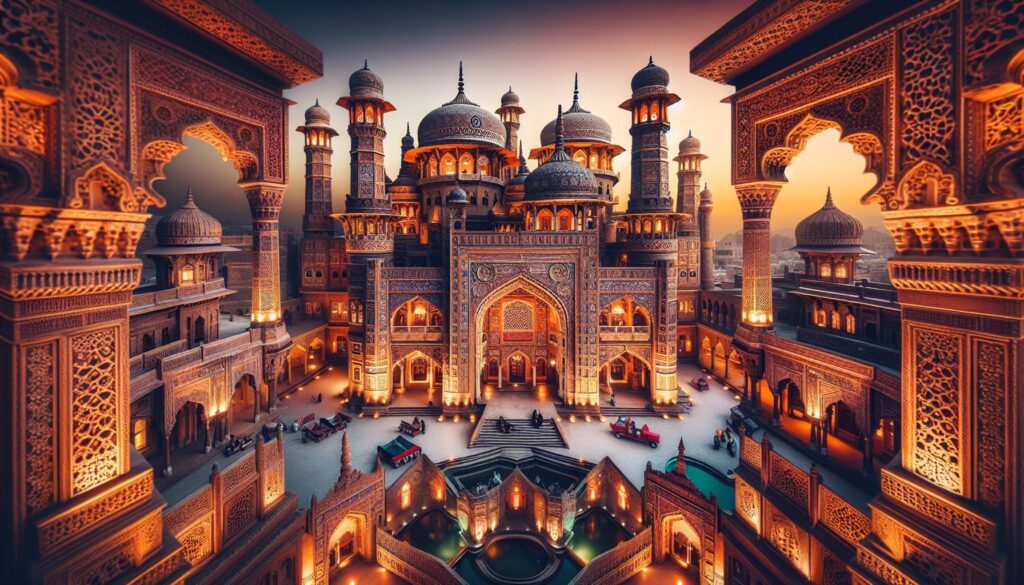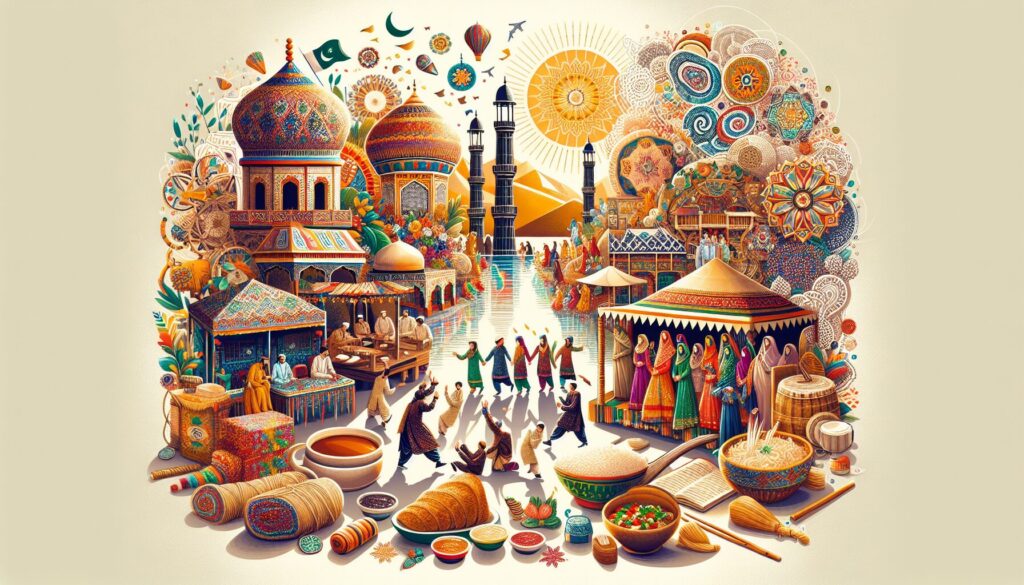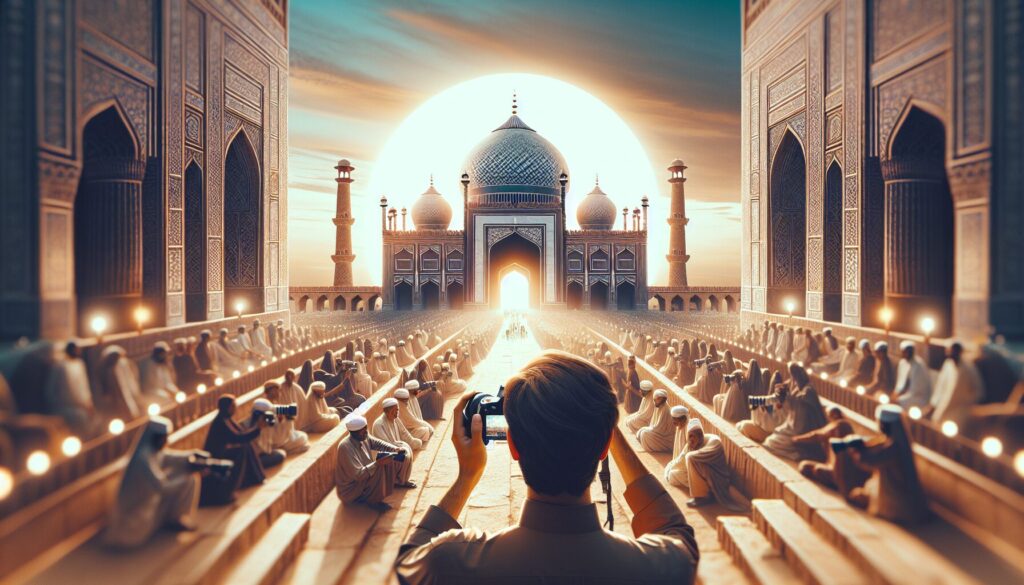Exploring Pakistan’s cultural tapestry is like embarking on a journey through time. Each region offers a unique glimpse into the country’s rich history. From the vibrant streets of Lahore, where Mughal architecture stands tall, to the serene valleys of Hunza, every corner tells a story. I recall a visit to the bustling markets of Karachi, where the aroma of spices filled the air, and artisans crafted intricate textiles. These experiences shape our understanding of Pakistan’s heritage. Photography enthusiasts can capture this vibrant diversity by focusing on local festivals, traditional attire, and historic sites. Embrace the challenge of documenting Pakistan’s cultural legacy through your lens. Highlight the stunning landscapes and the warmth of its people. By doing so, you contribute to the narrative of a nation proud of its diverse and colorful identity.
Essential Photography Techniques for Capturing Heritage
Photography in Pakistan offers unique opportunities to capture the rich cultural tapestry of the region. The vibrant streets of Lahore and the ancient ruins of Mohenjo-Daro are a photographer’s dream. Understanding the techniques to capture these heritage sites is crucial for impactful storytelling.
Understanding Light and Shadow
Light plays a vital role in photography. In my experience capturing the Badshahi Mosque, I noticed how different times of day altered the mood. Early morning light casts soft shadows, highlighting intricate carvings. During midday, the contrast becomes stark, perfect for dramatic shots. Experimenting with natural light can add depth to your images. Using a polarizing filter can help reduce glare, especially on sunny days.
Choosing the Right Equipment
Investing in the right gear is essential. A DSLR or mirrorless camera with a wide-angle lens allows for expansive shots. This is particularly useful when photographing large structures like the Lahore Fort. A tripod is invaluable for evening shots, ensuring stability and clarity. Don’t forget a lens cloth; dust can be an issue in more arid regions.
Engage with Local Culture
Engaging with local culture enriches your photographic journey. While photographing the vibrant Shandur Polo Festival, I found that conversing with locals provided unique insights. This not only enhances your experience but also opens up opportunities for more authentic portraits. Always ask for permission before taking someone’s photo, respecting their privacy and customs.
Framing and Composition Techniques
Composition is a powerful tool in storytelling. The rule of thirds can guide the viewer’s eye to the focal point. Leading lines, like the walkways in Shalimar Gardens, draw attention inward. Pay attention to symmetry, especially in architectural photography. This can create a sense of balance and harmony in your images.
Post-Processing Tips
Post-processing enhances your photographs without altering their authenticity. Software like Lightroom can adjust exposure and contrast effectively. While editing, aim for a natural look; over-processing can detract from the subject. Subtle adjustments can bring out the vibrant colors of traditional Pakistani attire during cultural events.
Incorporating these techniques can transform your photography, allowing you to capture the essence of Pakistan’s cultural heritage. Whether you’re exploring the bustling streets of Karachi or the serene beauty of Hunza Valley, each location offers a unique story waiting to be told. For more insights, consider visiting The National College of Arts or The Pakistan National Council of the Arts to deepen your understanding of local art and culture.
Top Heritage Sites in Pakistan for Photographers

Pakistan is a treasure trove of rich history and vibrant culture, making it a paradise for photography enthusiasts. The country’s diverse heritage sites offer endless opportunities to capture stunning images. As a passionate photographer, I recall my first visit to the iconic Lahore Fort, where the intricate Mughal architecture left me spellbound. The fort’s towering gates and mosaic walls offered countless angles for capturing its grandeur, particularly during the golden hour when the light perfectly highlighted its details.
The Enchanting Mohenjo-Daro
Few places are as fascinating as Mohenjo-Daro, a UNESCO World Heritage Site. This ancient city, dating back to 2500 BCE, provides a glimpse into the Indus Valley Civilization. Photographers can explore the grid-like streets and marvel at the advanced urban planning. Capture the remnants of this bygone era with shots of the Great Bath and the residential complexes. For those seeking more guidance on historical photography techniques, check out our detailed guide on photography genres in Pakistan.
The Majestic Badshahi Mosque
The Badshahi Mosque in Lahore is a masterpiece of Mughal architecture. Its massive proportions and intricate designs make it a must-visit for photographers. The mosque’s expansive courtyard allows for wide-angle shots that capture its full majesty. Meanwhile, the detailed carvings and frescoes offer opportunities for close-up photography. An early morning visit ensures fewer crowds and soft lighting, perfect for capturing the mosque’s serene beauty.
Enchanting Makli Necropolis
Makli Necropolis, located near Thatta, is one of the largest funerary sites in the world. The site spans over 10 square kilometers, with tombs dating back to the 14th century. Each tomb is a work of art, adorned with intricate tile work and carvings. Photographers can capture the stunning contrast between the ancient structures and the surrounding landscape. According to UNESCO, Makli is a testament to the Sindh region’s rich cultural heritage.
Rohtas Fort’s Timeless Beauty
Rohtas Fort, a UNESCO World Heritage Site, is an architectural marvel from the 16th century. Built by the Afghan king Sher Shah Suri, this fort offers panoramic views of the surrounding countryside. Its massive walls and gates are ideal for dramatic shots. As you wander through its ancient paths, don’t miss the opportunity to photograph the Sohail Gate, known for its grandeur and historical significance.
Incorporating Local Traditions and Festivals in Your Photos

In the vibrant tapestry of Pakistan’s cultural heritage, capturing the essence of local traditions and festivals is a photographer’s delight. As a photographer deeply embedded in this rich culture, I recall my first experience photographing the colorful Basant festival. Held in Lahore, this event is a riot of colors, kites, and joy. To capture the essence of such festivals, it’s crucial to immerse yourself in the atmosphere. Understanding the cultural significance adds depth to your photographs. It’s not just about clicking the shutter; it’s about telling a story through images.
Understanding the Significance
Every festival in Pakistan has a story. Eid-ul-Fitr and Eid-ul-Adha are more than religious events; they are times of unity and celebration. The spiritual essence is palpable. To capture this, focus on candid moments. A child receiving Eidi or families gathering for a meal can speak volumes. It’s these details that resonate with viewers.
Choosing the Right Equipment
The right gear can make a difference. A DSLR or mirrorless camera with a fast lens is ideal for low-light conditions. Festivals like Shandur Polo Festival, held in the northern areas, offer unique challenges. Fast-moving subjects require a high shutter speed. Be prepared to adjust your settings swiftly. The right equipment helps in capturing those fleeting moments with clarity.
- Wide-angle lenses are great for crowd shots.
- Prime lenses are excellent for portraits, capturing the essence of emotions.
- Consider using a tripod for night events like the Urs of Lal Shahbaz Qalandar at Sehwan Sharif.
Respect and Engagement
Engagement with locals is a crucial element. Approach people with respect and seek permission before taking their photographs. This not only builds rapport but often results in more natural and expressive images. For example, when photographing the Kalash festival in Chitral, understanding their customs showed respect and yielded better pictures. Many times, locals are more than willing to share their stories, adding depth to your work.
Utilizing Natural Light
Natural light is a photographer’s best friend. Early mornings and late afternoons, often referred to as the golden hours, provide soft lighting. This is ideal for highlighting intricate details in traditional attire and decorations. During the Sindh Festival, the soft light beautifully illuminates the vibrant colors of traditional dresses. Always be aware of your surroundings to utilize light effectively.
Editing Techniques
Post-processing is an integral part of photography. Use software like Adobe Lightroom to enhance your images. Adjusting contrast, saturation, and sharpness can bring out the vibrancy of a festival. However, be careful not to over-edit. The aim is to stay true to the scene you captured, maintaining authenticity.
Ethical Considerations When Photographing Cultural Heritage

Preserving the essence of Pakistan’s cultural heritage through photography requires a deep understanding of the ethical implications involved. Every photograph tells a story, and capturing those stories respectfully is crucial. During a recent excursion to the ancient city of Mohenjo-Daro, I learned firsthand the importance of ethical considerations in cultural photography. This site, with its rich history, demands respect from photographers. A simple misstep can lead to misrepresentation of its cultural significance.
Respect Local Traditions and Customs
Photographers must be aware of the local traditions and customs. In Pakistan, cultural sites are often intertwined with religious practices. It’s vital to approach these areas with sensitivity. For instance, when photographing the stunning architecture of Badshahi Mosque, one must adhere to guidelines regarding attire and behavior. Engaging with local communities to understand their customs is essential.
Seek Permission and Build Rapport
Before capturing images of people or privately-owned cultural sites, always seek permission. Building rapport with local communities not only enriches your experience but also ensures that your work is received positively. Express genuine curiosity and respect for their stories and histories. This approach not only enhances your photographs but also fosters trust.
Be Aware of the Impact
Photographs have the power to influence perceptions. It’s important to consider how your images might be interpreted. Misrepresentation can lead to stereotyping or cultural appropriation, which can harm communities. Instead, aim to showcase the diversity and richness of Pakistan’s heritage. When creating content for ‘The Complete A-Z Guide to Capturing Pakistan’s Cultural Heritage Through Photography’, ensure that the portrayal is accurate and respectful.
Avoid Disruption
When visiting cultural sites, avoid causing disruption. Using flash photography in sensitive areas can be intrusive. Crowding around sacred sites might disturb visitors and locals alike. Always stay informed about the rules specific to the location. Researching in advance can help you avoid unintentional disruptions.
Use Your Platform Responsibly
As photographers, the images you share can reach a global audience. Utilize this platform to promote understanding and appreciation of Pakistan’s cultural heritage. Share the stories behind the images to offer context and depth. For more guidance on capturing diverse photography genres in the country, refer to our article on ‘your natural keyword-rich anchor text here’.
- Engage with local historians or guides for accurate information.
- Always credit those who assist you in your work.
- Consider the long-term effects of your work on the community.
Conclusion
Photography in Pakistan offers a unique opportunity to explore a rich tapestry of culture and history. Capturing the essence of this vibrant nation requires more than just technical skill. It demands an understanding of local customs and traditions. For instance, photographing the bustling streets of Lahore during Basant, the kite festival, can be a thrilling experience. The sky, filled with colorful kites, is a sight to behold. The key is to use a fast shutter speed to freeze the movement of the kites and the joyous expressions of the participants.
Additionally, capturing the architectural marvels of Badshahi Mosque and Mohenjo-daro requires patience and the right light. Early morning or late afternoon provides the best conditions to highlight their intricate designs. A tripod can help stabilize your camera for sharper images, especially in low light. Another tip is to shoot from different angles. This can reveal new perspectives and details that often go unnoticed.
Engaging with local communities can also enrich your photographic journey. People in rural areas, such as those in Swat Valley, often share fascinating stories of their heritage. These interactions can lead to authentic portraits that tell a deeper story. It’s important to be respectful and seek permission before taking photos. Understanding cultural sensitivities is crucial in building trust and capturing genuine moments.
In summary, capturing the cultural heritage of Pakistan through photography is a rewarding endeavor. By combining technical skills with cultural insights, photographers can create images that resonate with authenticity and depth. This approach not only enhances the quality of your work but also fosters a greater appreciation for Pakistan’s diverse cultural landscape.
Continue Exploring
Unlock the secrets of capturing breathtaking photos with the perfect lighting techniques tailored for Pakistan's unique environment. Dive into expert insights and transform your photography skills today!
Frequently Asked Questions
What are the best photography techniques for capturing Pakistan's historical landmarks?
To effectively capture Pakistan’s historical landmarks, use a combination of wide-angle lenses for expansive shots and zoom lenses for intricate details. Golden hour lighting can enhance the architectural beauty, while HDR photography helps in managing high contrast scenes. It’s also essential to research the history and significance of each site to capture its essence accurately.
How can I capture the essence of Pakistan's diverse cultural festivals in photographs?
Capturing the essence of Pakistan’s cultural festivals requires understanding the cultural context and being present at key moments. Use fast shutter speeds to freeze action during energetic performances and slower speeds to convey motion in dances. Engaging with locals can provide unique perspectives, and using vibrant colors can help highlight the festive atmosphere.
What are some recommended locations in Pakistan for photographing cultural heritage sites?
Pakistan offers numerous locations for photographing cultural heritage, including the ancient city of Mohenjo-daro, the Mughal architecture of Lahore Fort, the stunning Faisal Mosque in Islamabad, and the historic Rohtas Fort. Each site offers unique photographic opportunities, from architectural marvels to culturally rich landscapes.


Leave a Reply